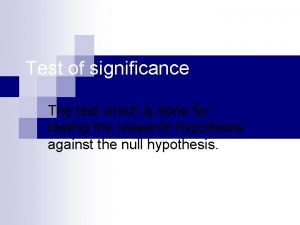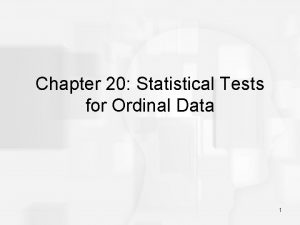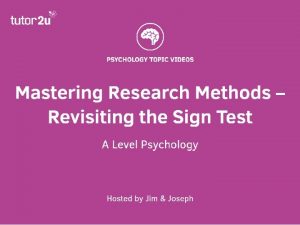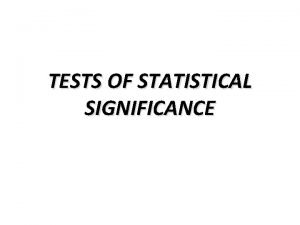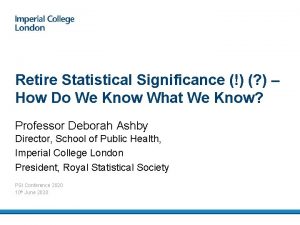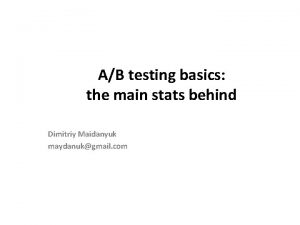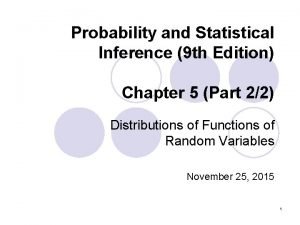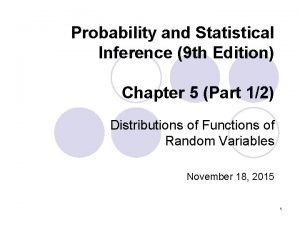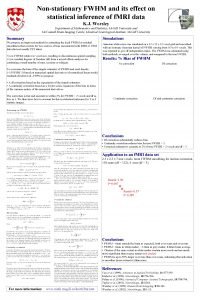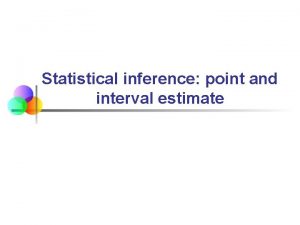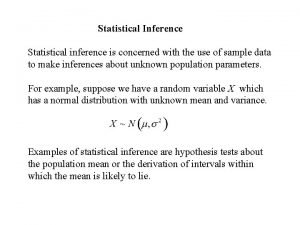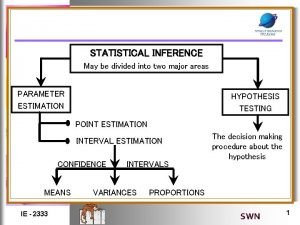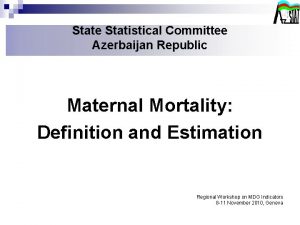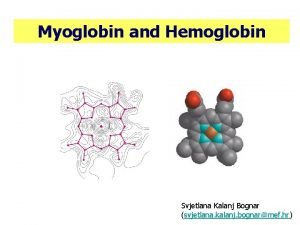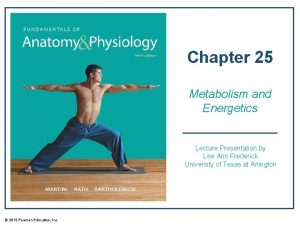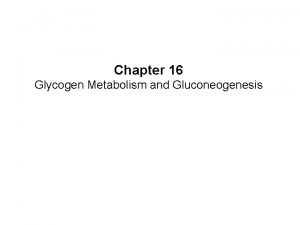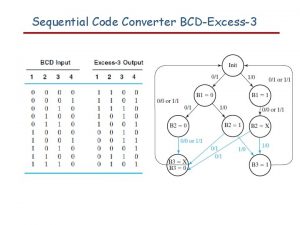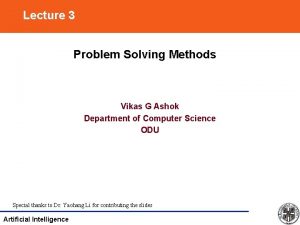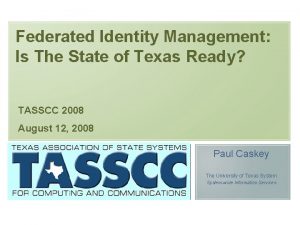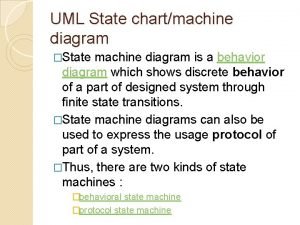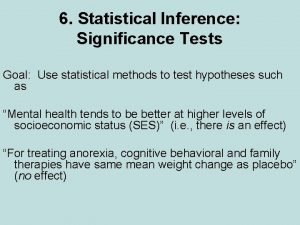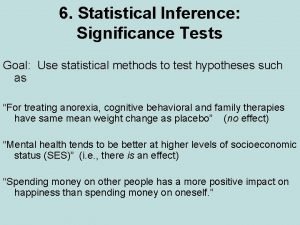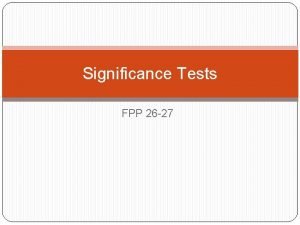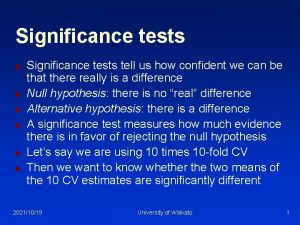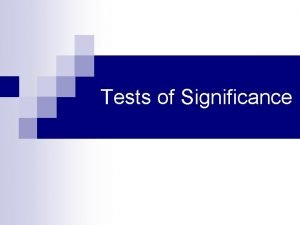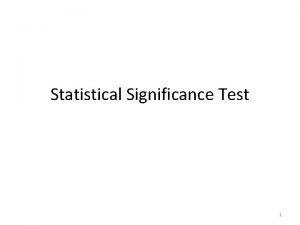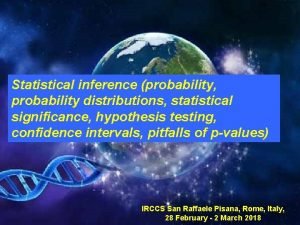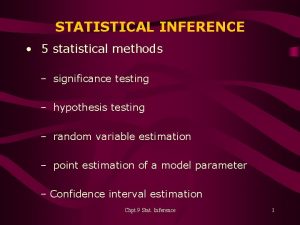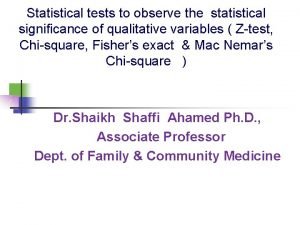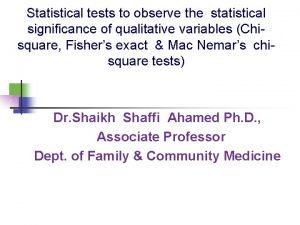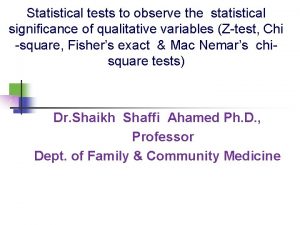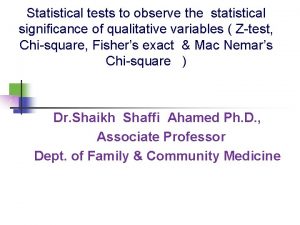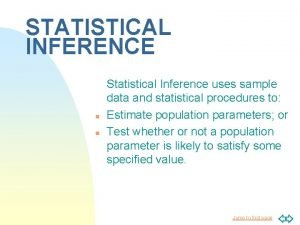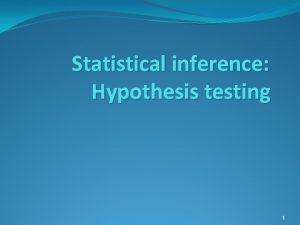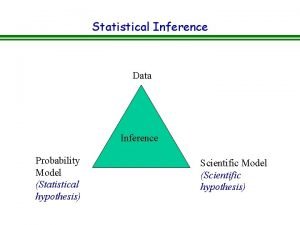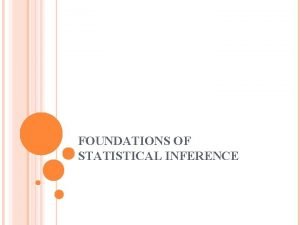TESTS OF STATISTICAL SIGNIFICANCE STATISTICAL INFERENCE TRUE STATE




































- Slides: 36

TESTS OF STATISTICAL SIGNIFICANCE

STATISTICAL INFERENCE TRUE STATE OF AFFAIRS EFFECTIVE NOT EFFECTIVE True positive(correct) False positive(type I / alpha error) Conclusion of study NOT EFFECTIVE False negative(type II /beta True negative (correct) error)

AVAILABLE TESTS • STANDARD ERROR TESTS – making use of limit/choice of 95% level of confidence to declare any value falling outside the 95% confidence interval or two standard errors to be statistically significant – These include • MEANS /, PROPORTIONS OF ONE SAMPLE • DIFEERENCE BETWEEN MEANS / PROPORTIONS OF TWO SAMPLES

FORMULAE FOR ESTIMATION OF STANDARD ERROR(SE) OF SAMPLE • 1. SE of sample mean= SD/ √n • 2. SE of sample proportion(p) = √pq/n • 3. SE of difference between two means[SE(d)]=√SD 1/ n 1+ SD 2/n 2 • 4. SE of difference between two proportions= √p 1 q 1/n 1+ p 2 q 2/n 2

REFERENCE RANGES • The 95% limits( REFER TO 2 Std deviations on either side of mean) and are referred to as REFERENCE RANGE • For many biological variables they define what is regarded as the NORMAL RANGE OF THE NORMAL DISTRIBUTION

THE AIM OF A STATISTICAL TEST To reach a scientific decision (“yes” or “no”) on a difference (or effect), on a probabilistic basis, on observed data. 6


SIGNIFICANCE TESTING • GOAL: see if observed test result/ hypothesized difference is likely to be due to chance • PRINCIPLE: Process of significance testing or statistical inference(HA) based on principle of relating the observed findings to the hypothetical true state of affairs(H 0)

HOW TO DECIDE WHEN TO REJECT THE NULL HYPOTHESIS? H 0 rejected using reported p value arbitrarily chosen to be 0. 05 REMEMBER THE REMAINING 5% OF DATA LEFT OUT WHEN USING 95 % CONFIDENCE INTERVAL IN STANDARD ERROR APPROACH p-value = probability that our result (e. g. a difference between proportions or a RR) or more extreme values could be observed under the null hypothesis 9

STEPS IN SIGNIFICANCE TESTING • 1. generating hypothesis – NULL HYPOTHESIS VS ALTERNATE HYPOTHESIS • 2. determine probability of error – P VALUE OF SAY 0. 05 OR 0. 01 (if more confident) • 3. choose appropriate statistical test; calculate test statistic • 4. obtain the p value for data of the particular sample statistic • 5. describe inference and conclusion

Types of errors Truth No diff Decision based on the p value Diff No diff Diff • H 0 is “true” but rejected: Type I or error • H 0 is “false” but not rejected: Type II or error 11

PROBABILITY OF TYPE I ERROR AND LEVEL OF α % OF TYPE I ERROR LEVEL OF α 10% 0. 1 5% 0. 05 1% 0. 01 0. 1% 0. 001 0% . 000

CHOOSING APPROPRIATE STATISTICAL TESTS • Whether comparison is between independent or related groups • Whether proportion or means are being compared • Whether more than two groups are being compared

Examples of Sample Statistics: Single population mean Single population proportion Difference in means (ttest) Difference in proportions (Z-test), x 2 test Odds ratio/risk ratio Correlation coefficient Regression coefficient …

COMMON STATISTICAL TESTS DESIGN NATURE OF VARIABLES STAISTICAL TEST STATISTIC DERIVED 2 independent groups Qualitative (nominal) Qunatitative (continuous) Chi –square test × 2 Paired t -test t More than 2 Qualitative independent groups (nominal) Qunatitative (continuous) Chi –square test × 2 ANOVA F 2 related groups Student t -test t

MANY STATISTICS FOLLOW NORMAL (OR T-DISTRIBUTIONS)… • Means/difference in means – T-distribution for small samples • Proportions/difference in proportions • Regression coefficients – T-distribution for small samples • Natural log of the odds ratio

PARAMETRIC TESTS(t, z and f tests) tests • Test hypothesis about means or variances • Their hypothesis refer to population ( population mean z or t tests) • Population variance (f tests) • Their hypothesis concern interval / ratio scale data (wt , BP, IQ) • Assume population data to be normally distributed

NON PARAMETRIC TESTS –(chi sq test) • • Do not test hypothesis concerning parameters Do not assume normal distribution of data Used to test nominal/ordinal data Less powerful than parametric tests

CHI –SQUARE TEST- essentials • Used to find out whether observed difference between proportions of events in 2 or more groups can be considered statistically significant • Non parametric test • Use qualitative , discrete data in proportions or frequencies (not in %) • Statistic calculated is chi square(x 2)

STEPS OF APPLYING CHI- SQUARE TEST(x 2) • An assumption of no difference is made which is then proved or disproved with the help of x 2 test. • (THE NULL HYPOTHESIS) – – – – – Fix a level of significance (0. 05)-the p –value Enter study data in the table , (observed frequency (O) Calculate expected frequency for each cell(E) Formula of x 2 value for each cell =(O-E)2/E Expected frequency = (RTx. CT/GT) Add up results of all cells x 2 calcul=∑(O-E)2/ E Df = (C-1)x(R-1) its 1 in a 2 x 2 table Read x 2 table for corresponding p- value Compare this p- value with level of significance (0. 05) and decide fate of the alternate or research hypothesis

Is the daily use of library facility associated with shorter distance from hostels? Distance from lib Used lib in evening Not used lib in evening total Less than 1 km (O)51 (E=44. 4) (O)29 (E=35. 6) 80 1 km or more (0)35 (E=41. 6) (0)40 (E=33. 4) 75 86 Expected values are ///////// = calculated on the 69 155 Basis of Ho i. e there utilization time is no difference in lib between 2 groups of students

• X 2= (51 -44. 4)2 + (29 - 35. 6) 2 + (35 - 41. 6)2 + (40 - 33. 4)2 • 44. 4 35. 6 41. 6 33. 4 • ====== 4. 55 • X 2 at 2 df = 4. 55 ( p value is < 0. 05 in table) • for P- value at 0. 05, X 2 in table is 3. 84 at 2 df • P – value in sample statistic is < 0. 05 so • The results are significant and H 0 is REJECTED

STUDENT’S T-TEST • • Applied for numerical data (mean values) Normal distribution of variable assumed Random sampling Steps – Calculate t- value (from data) – Choose level of significance, p- value 0. 05 – Determine df (sum of 2 samples sizes minus 2 ) – Find t value for LOS decided from table, if calculated t value is > than table value , Ho is rejected.

HOW TO CALCULATE t- VALUE • Calculate means of any 2 groups/samples(X 1, X 2) • Calculate their difference(X 1 - X 2) • Calculate standard deviation (SD)of each group • Calculate standard error(SE) for each SD/√n) The t- value= X 1 -X 2/ √ SD 1/n 1+ √ SD 2/n 2

example Delivery outcome N Mean height SD Normal B Wt 60 156 cm 3. 1 Low B Wt 52 152 cm 2. 8

Ho= there is no difference in mean heights of the two groups--- difference may be by chance but acceptable level of significance is 0. 05 • t= √ x 1 -x 2 = 2 Sd 12/n 1 +sd 22/n 2 √ 3. 12/60+2. 82/52 =2 = 3. 6 0. 56 • Value of t at df=110 at 0. 05 LOS is 1. 98(< 3. 6) • So difference is significant and Ho is rejected •

CORRELATION • Establish and quantify strength and direction of relationship between 2 variables by – “Correlation coefficient” symbol : r – Range -1 or + 1 – Size of coefficient: signifies strength – Sign of coefficient : signifies direction – 2 types of correlation coefficients used • Pearson correlation coefficient: interval/ratio scale • Spearman correlation coefficient: ordinal scale data

Correlation Coefficient • The population correlation coefficient ρ (rho) measures the strength of the association between the variables • The sample correlation coefficient r is an estimate of ρ and is used to measure the strength of the linear relationship in the sample observations

Scatter Plots and Correlation • A scatter plot (or scatter diagram) is used to show the relationship between two variables • Correlation analysis is used to measure strength of the association (linear relationship) between two variables – Only concerned with strength of the relationship – No causal effect is implied

Scatter Plot Examples Linear relationships Curvilinear relationships y y x y x x

Scatter Plot Examples Strong relationships Weak relationships y y x y x x

Scatter Plot Examples No relationship y x

Examples of Approximate r Values y y y r = -1 x r = -. 6 y x r=0 y r = +. 3 x r = +1 x x

Significance Test for Correlation • Hypotheses H 0 : ρ = 0 HA : ρ ≠ 0 (no correlation) (correlation exists) • Test statistic – (with n – 2 degrees of freedom)

REGRESSION • Means change in measurements of a variable character on the positive or negative side beyond the mean • For strongly correlated variables , value of dependent variable can be predicted from the values of the independent variable – Simple linear regression – Multiple linear regression – Logistic regression

HOPE FEELING READY TO LAUNCH THE NEXT RESEARCH HYPOTHESIS WITH • • • 95% CONFIDENCE LEVEL AND < 5% P-VALUE FOR THE TEST STATISTIC or < 5% LEVEL OF TYPE 1 ERROR or <20% LEVEL OF TYPE II ERROR AND 80% POWER OF STUDY TO PICK UP THE REAL DIFFERENCE
 Ace different iq tests still make
Ace different iq tests still make Types of significance tests
Types of significance tests Univariate statistical tests
Univariate statistical tests T test ordinal data
T test ordinal data Stats test table
Stats test table Yyxyxx
Yyxyxx Psychology statistical test table
Psychology statistical test table Statistical significance p value
Statistical significance p value Retire statistical significance
Retire statistical significance Ab testing basics
Ab testing basics Chebyshev inequality proof
Chebyshev inequality proof Probability and statistical inference 9th solution pdf
Probability and statistical inference 9th solution pdf Statistical inference
Statistical inference Point estimation
Point estimation Statistical inference is concerned with
Statistical inference is concerned with Statistical inference is divided into
Statistical inference is divided into Amer rasheed
Amer rasheed Chapter 2 jesus christ true god and true man
Chapter 2 jesus christ true god and true man State statistical committee of the republic of azerbaijan
State statistical committee of the republic of azerbaijan State the properties of liquid state
State the properties of liquid state State to state regionalism
State to state regionalism D ff excitation table
D ff excitation table Software implementation of state graph
Software implementation of state graph T state vs r state
T state vs r state What is a degenerate orbital
What is a degenerate orbital T and r state of hemoglobin
T and r state of hemoglobin Absorptive state vs postabsorptive state
Absorptive state vs postabsorptive state Types of glycogen storage disease table
Types of glycogen storage disease table Age of consent per state
Age of consent per state Current state vs future state diagram
Current state vs future state diagram State diagram to state table converter
State diagram to state table converter Present state desired state
Present state desired state State state graphs and transition testing
State state graphs and transition testing What is initial state + goal state in search terminology?
What is initial state + goal state in search terminology? Tasscc state of the state
Tasscc state of the state Behavioral state machine diagram
Behavioral state machine diagram Ct state comptroller
Ct state comptroller

